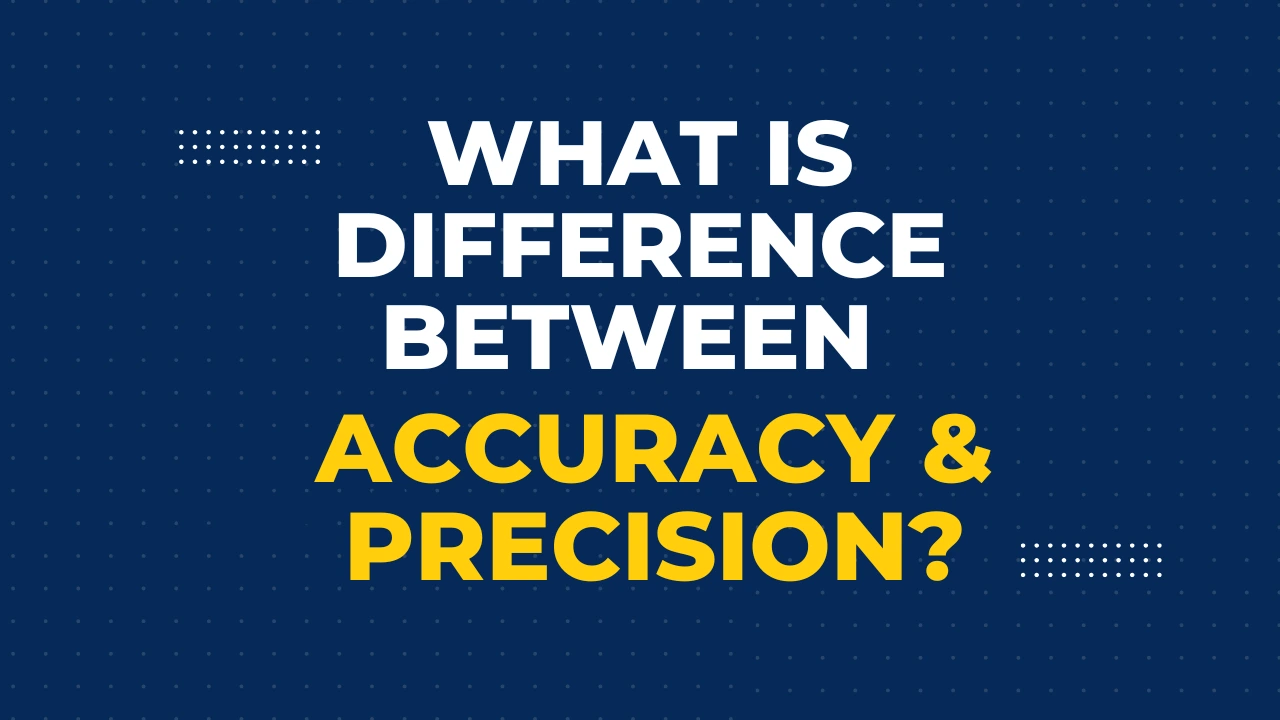Table of Contents
ToggleAccuracy is different from precision 😟
The terms accuracy and precision mean the same thing to most people. However, in science or instrumentation their meanings are quite distinct.
Accuracy is the closeness of measurements to the correct or accepted value of the quantity measured
Precision is the closeness of a set of measurements of the same quantity made in the same way.
Below figure on the facing page can help you visualize the difference between precision and accuracy.
Several darts thrown separately at a dartboard may land in various positions, relative to the bull’s-eye and to one another.
The closer the darts land to the bull’s – eye, the more accurately they were thrown. The closer they land to one another, the more precisely they were thrown.
👉 In figure A is both accurate and precise: the darts are close to the bull’s – eye and close to each other.
👉 In figure B, the set of results is inaccurate but precise: the darts are far from the bull’s – eye but close to each other.
👉 In figure C, the set of results is both inaccurate and imprecise: the darts are far from the bull’s – eye and far from each other. Notice also that the darts are not evenly distributed around the bull’s – eye, so the set, even considered on average, is inaccurate.
👉 In figure D, the set on average is accurate compared with the third case, but it is imprecise. That is because the darts are distributed evenly around the bull’s – eye but are far from each other.
Accuracy and Precision in Instrumentation
Same story when choosing field instrumentation for process facilities (like flow, pressure, level, temperature, etc).
The three important factors are,
1. Accuracy – how close is the measured value to the true value. For e.g., a flow meter being able to measure accurately against a reference standard.
2. Precision – Means repeatability ensuring multiple readings are similar to each other & fitting within a standard deviation.
3. Resolution – The smallest change an instrument can detect.
When choosing instrumentation, high accuracy is of no use, if the instrument is not precise every time a reading is taken.
What is Percentage Error?
Percentage error has a negative value if the accepted value is greater than the experimental value. It has a positive value if the accepted value is less than the experimental value. The following sample problem illustrates the concept of percentage error.
How to calculate percentage error?
A student measures the mass and volume of a substance and calculates its density as 1.40 g/mL. The correct, or accepted, value of the density is 1.30 g/mL. What is the percentage error of the student’s measurement?
I hope you like above blog. There is no cost associated in sharing the article in your social media. Thanks for reading!! Happy Learning!!



3 Comments